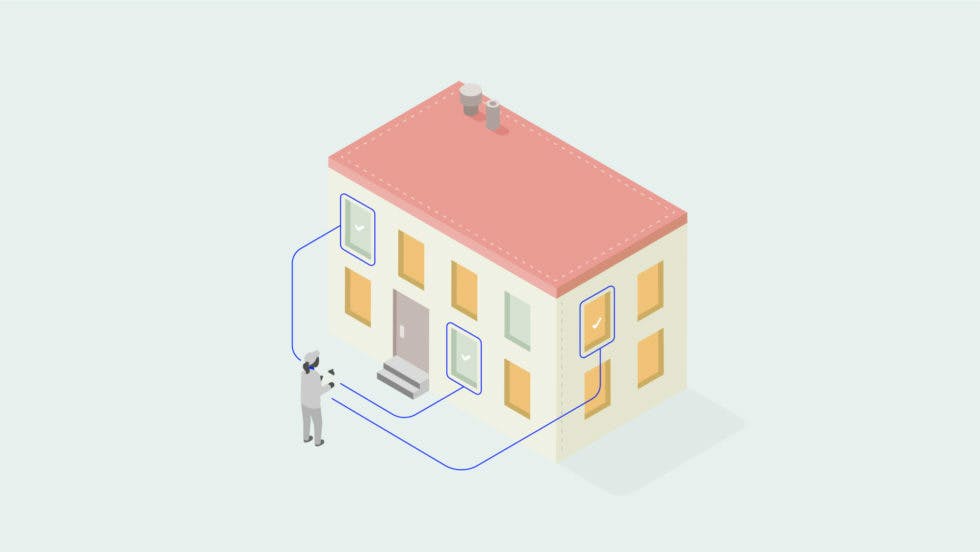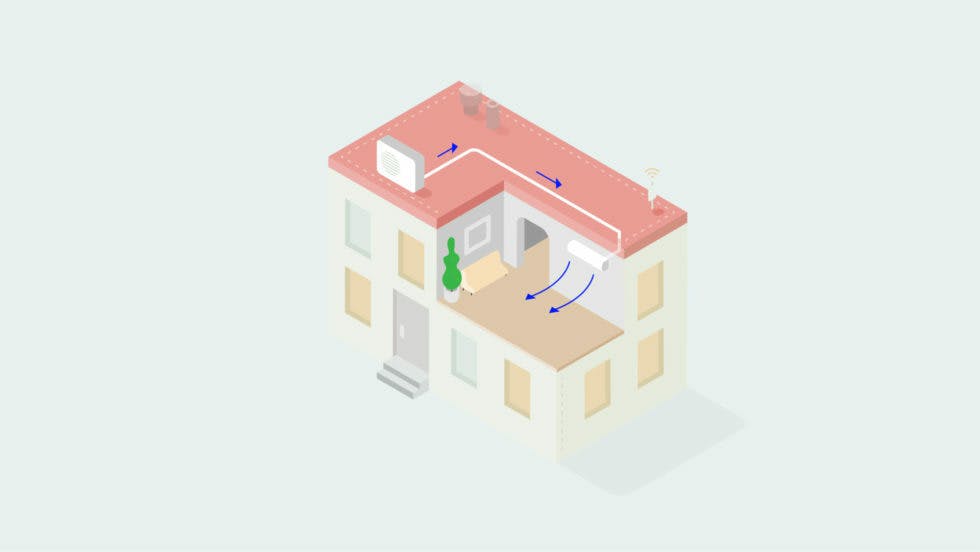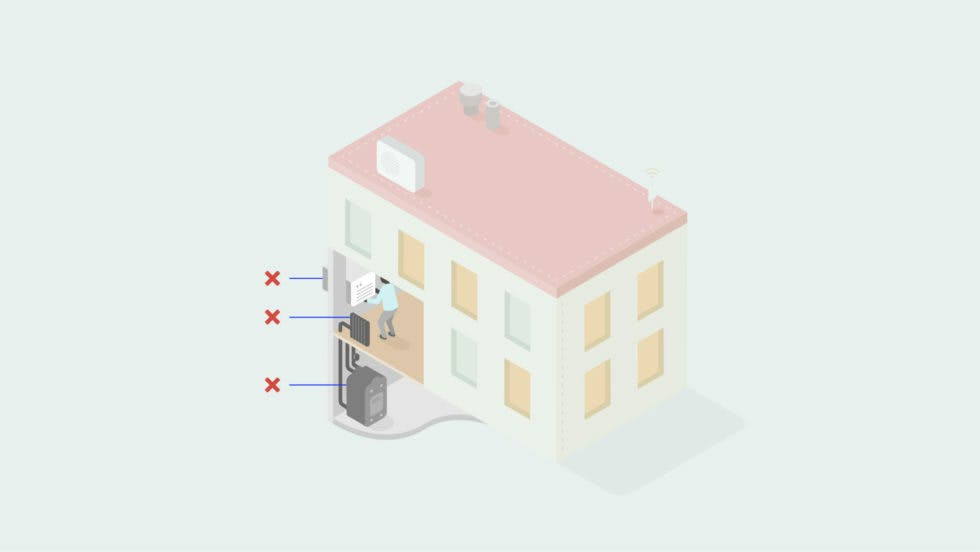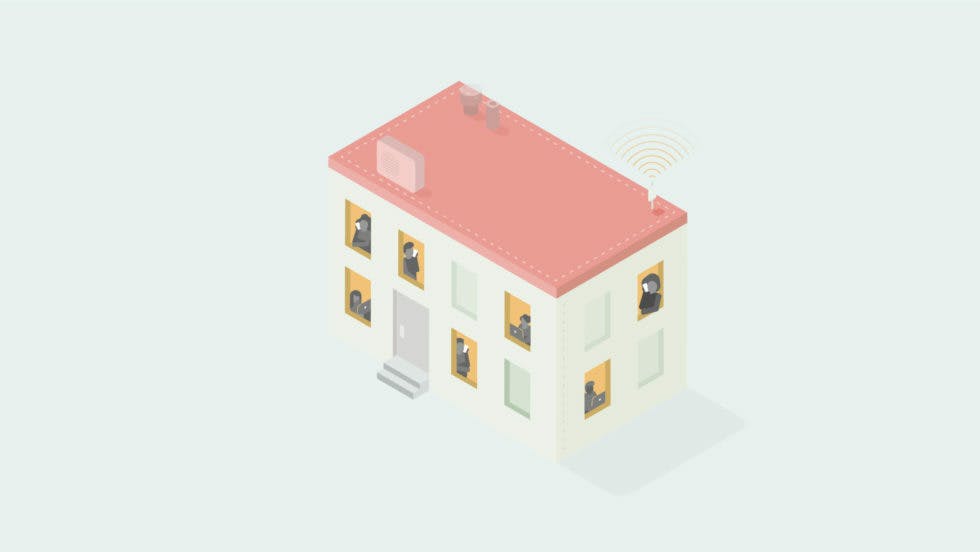How Greener Buildings Can Help Knit A Community Together
Ask Donnel Baird about what his company BlocPower is up to, and he may get futuristic and tell you about “turning buildings into Teslas.” Or he may go historical and wax poetic on LBJ, FDR, and rural electricity co-ops. Or he might tell you about the woman he met at a building in the Bronx.
The woman, a senior citizen, has a son in the military. She used to constantly buy expensive phone cards so she could make international calls to him—but they would always miss each other, and she struggled to afford the cards in the first place. Then BlocPower retrofitted her building with sustainable technology, which included installing a Wi-Fi network. “She was in tears,” Baird says. “She can call over the Wi-Fi for free, internationally, using an app on her phone. Now she’s saving all this money on international phone calls and she gets to talk to her son everyday in a way that she couldn’t before. She gets to see his face every day. For her, that was the most important thing about having Wi-Fi.”
Baird, an Emerson Collective Dial Fellow, is not simply in the business of installing Wi-Fi. BlocPower, a climate technology startup that helps building owners green their properties, exists because there are roughly 130 million buildings in the United States, and the day-to-day operations of these buildings account for a staggering 30% of U.S. greenhouse gas emissions.
Armed with these facts, Baird started knocking on doors, advocating for the importance of making buildings more sustainable. He thinks of himself as “a tech entrepreneur who was trained through community organizing,” and says the structure of BlocPower is designed to “create an ecosystem of people who are greening buildings together.”
By centering community, ecosystems, and togetherness, BlocPower acknowledges a sometimes obscure fact: that buildings are far more than bricks and timber and ductwork—they’re the spaces we all live and work and play in. The spaces where we come together. Which is why greening buildings is about so much more than just carbon emissions; why sometimes, as a part of installing smart, electric heating and air, you need to install wireless networking equipment; and sometimes, as a part of that, a woman gets to see her son’s face from tens of thousands of miles away.
Here’s how BlockPower turns a building into a Tesla
BlocPower helps building owners electrify fossil fuel-reliant appliances in their buildings. Most commonly, that means replacing a boiler-based heating system with a heat pump, a kind of reversible A/C that pushes heat out in the summer and pulls it in in the winter.
**Here’s more of what can happen when one building goes green****The community gets connected:** BlocPower has now installed two mesh wi-fi networks, which they’ve placed in the ownership of host communities in Brooklyn and the Bronx, where 38% of people don’t have internet at home. BlocPower uses the networks to monitor and optimize its equipment, which residents lease; residents use them for all sorts of things. A woman speaks to her son, a veteran. A parent takes a good-paying job that’s headquartered far from her home. A kid learns remotely. In places like Chattanooga, municipally-owned networks have made it possible to extend internet service, for cheap or for free, to those in need. Now parts of New York City can do that, too. And Baird has his sights set higher: he’s advocating for a similar model in the Biden-Harris administration’s plan for national, community-owned broadband.
New economic opportunities are created: After its heat went out completely, BlocPower helped an Episcopal church in White Plains, New York, overhaul its existing system: an archaic oil boiler and a plethora of space heaters. With BlocPower’s heat pumps in place, the church is saving 55% on its utility bills and has cut its greenhouse gas emissions. Plus, in addition to heat, it now has air conditioning—which has helped the church shore up its finances, because the climate-controlled assembly hall can be rented out year-round.
Career pathways open up: The Biden-Harris plan calls for retrofitting 4 million buildings. Baird estimates that will generate hundreds of thousands of jobs, even just at the end of the process. Retrofitting buildings and installing the new, sustainable equipment is “just one part of it,” Baird points out. People will also be employed in manufacturing, assembly, financing, even—since buildings will be Teslas—coding the software that optimizes building operations. “Probably close to a million jobs if you play your cards right,” Baird says. And with thoughtful targeting, those jobs can be lifelines for the most vulnerable: In New York City, BlocPower is working with city agencies and community groups to create 1,500 green jobs for people most at risk of involvement in gun violence.
Community bonds drive even more change: There’s a reason BlocPower worked with the church in White Plains, and makes a point of working with faith communities from lots of different religions: community members trust decisions they make. “They’re just great role-model buildings,” Baird says—along with places like healthcare facilities and schools. “If you go in and electrify a synagogue and the clinic down the street, then all the attendees of that synagogue and all the people who get vaccinated at that clinic, they’re like, Oh, this building’s electric. I didn’t know you could do that. Let me see if I can do it at my house.” Helping civic institutions go sustainable creates credible messengers for sustainability, in other words. “Better than Elon Musk,” Baird says.



